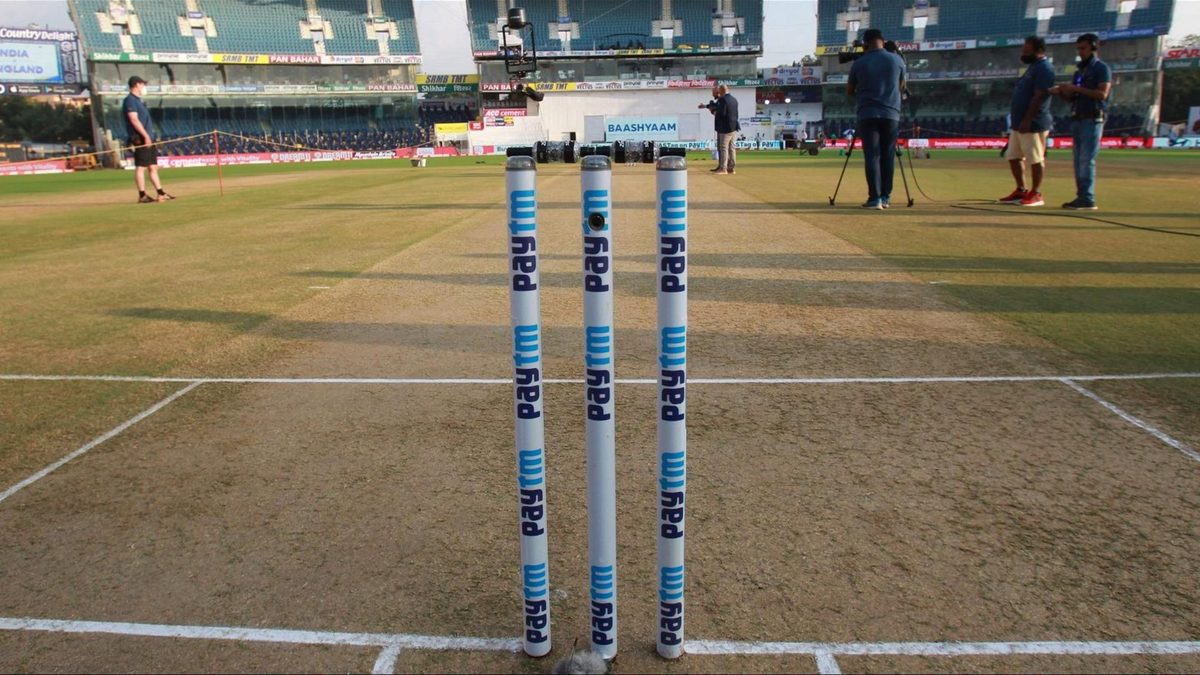
It’s often the case when England struggle in the subcontinent that the pitch is blamed, but in the second Test against India at Chepauk, the criticisms were more vocal than usual.
These included England captain Andrew Strauss, speaking on Channel 4 at lunch on day two, saying, “It’s a poor pitch. It doesn’t mean you can’t score runs on it, it doesn’t mean it’s an excuse for not winning. But when you’re looking at a five-day match, for it to be turning like it is right at the moment is the sign of a poor pitch for me.”
The ICC Pitch and Outfield Monitoring Process is available on the ICC website, and offers a definition for what ‘poor’ means.
“A Poor pitch is one that does not allow an even contest between bat and ball,” it says, “either by favouring the batters too much, and not giving the bowlers (seam and spin) from either team sufficient opportunity to take wickets, or by favouring the bowlers too much (seam or spin), and not giving the batters from either team the opportunity to make runs.”
It goes on to add that a pitch may be rated “poor” if “the pitch offers excessive assistance to spin bowlers, especially early in the match,” before adding some clarifications of varying usefulness.
The first points out “Excessive means ‘too much’.” The third suggests leeway can be found for pitches in Asia if they spin early.
“It is acceptable for a pitch to offer some degree of turn on the first day of a match, particularly in the sub-continent,” it says, “though anything more than occasional unevenness of bounce at this stage of the match is not acceptable. It is to be expected that a pitch will turn steadily more as a match progresses, and it is recognised that a greater degree of unevenness of bounce may develop.”
So there will be some amount of subjectivity employed in determining if the pitch is ‘poor’ or not. Spin has been dominant, accounting for 11 of the 15 wickets to fall so far, though England quick Olly Stone found enough assistance to take 3-47 in India’s first innings. The pitch noticeably puffed when the ball pitched from the first session onwards, with the turn on offer appreciable.
An international pitch being rated ‘poor’ is a rare occurrence across formats, having not happened once since the start of 2019. The ICC website mistakenly notes The Wanderers Test between India and South Africa as having taken place in 2019, when it actually occurred in 2018. That pitch was rated ‘poor’ for “excessively steep and unpredictable bounce‚ and excessive seam movement”, with the game halted on the third evening due to the dangerous nature on the surface, before resuming on day four for India to wrap up victory by 63 runs.
More relevant is another ‘poor’ rating in 2017 for another Test pitch involving India, at Pune against Australia. On that occasion, Australia made 260 and 285, while India were bowled out for 105 and 107, with Steve O’Keefe taking identical figures of 6-35 in both innings. Notably, that Test included success for the seamers, with Umesh Yadav taking 4-32 in the first innings, and a spectacular individual innings, with Steve Smith’s third-innings 109 rated Wisden’s Test innings of 2017. That demonstrates how a feat of batting brilliance, such as Rohit Sharma’s majestic 161, or a strong performance from the quicks, such as Olly Stone’s first-innings 3-47, won’t be enough by themselves to save Chepauk from a ‘poor’ rating on account of excessive spin.
If a pitch is rated ‘poor’, a venue receives three demerit points. Should a venue accumulate five demerit points in a rolling five-year period, it will be banned on hosting international cricket for a year. Wisden is unable to find evidence of Chepauk being handed demerit points in the past.








